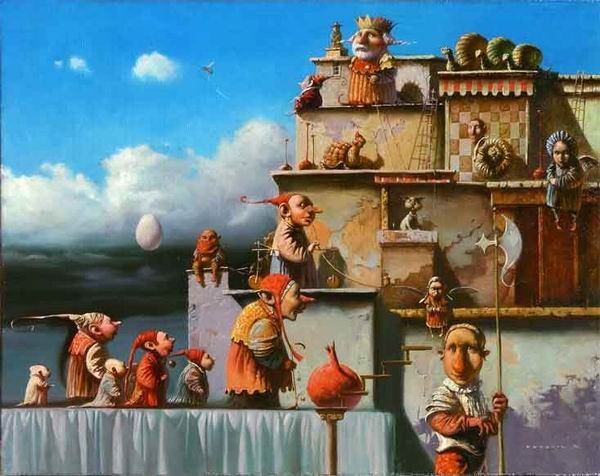
Chess Blindness: Blunders are There, Waiting to Be Made
The above witty commentary by GM Savielly Tartakower perfectly encapsulates a true perspective on inevitability of blunders.
Mistakes are built-in part of the game. No matter how skilled a player might be, the potential for making mistakes is always present. There would be no chess without errors. Every game would end in a boring, peaceful draw if both players played perfectly. In fact, one player's mistake is another's chance to gain an advantage which brings necessary dynamics to chess.
Chessboard blindness is a cognitive oversight or perceptual limitation where a chess player fails to see or consider certain moves. The player's attention is so narrowly focused on one aspect of the game so that they overlook threats (in particular captures — the most consequential moves — which one, especially the beginner, should pay particular attention to), as well as other tactical opportunities or chances elsewhere on the board.
 A Grigoriou Panagiotis (Greek) art
A Grigoriou Panagiotis (Greek) art
Impaired chess vision is not just limited to chess but can be applied metaphorically to other areas of life where narrow focus can lead to missing out on broader perspectives or windows.
Chess myopia can affect both novice and experienced players leading to mistakes in gameplay. But here we are going to focus on the novice player as the early teaching and learning are my forte![]() Clouded board vision is a very common issue among beginners. Unfortunately, chess educators infamously overlook this big, big problem.
Clouded board vision is a very common issue among beginners. Unfortunately, chess educators infamously overlook this big, big problem.
The game below is a manifest for a better problem recognition and a new alternative teaching model to combat this vital issue from the very beginning of a chess player's journey. Because defective board vision is extremely damaging in the long run.
I shared my insights about poor board vision in the past.
This is the signature game of bankrupt board vision par excellence that I've already posted numerous times,
1.e4 d5 2.Bd3 Bg4

and now 3.exd5?!?
This phenomenon can occur due to several reasons but he main cause of distorted board vision is the way we teach in the critical early period of learning. We teach the moves first ("fundamentally flawed," Nimzovich) instead of attending to piece relationships structurally and functionally. In the absence of this critical conceptual understanding, right after showing the moves comes a period of aimless wood pushing (see the game). That is making moves for the move's sake, the natural product of the classical method with the moves first (check my blog out for more details).
As a matter of fact, blunders come from the flaws of early chess cognition during a short critical period,
“Critical period is a phase during which a learner has heightened sensitivity to stimuli that are compulsory for the development of a particular skill. If the learner does not receive the appropriate stimulus during this critical period, it may be difficult, ultimately less successful, or even impossible, to develop some functions later,” [from How children develop, New York, Worth Publishers, by Dr. Robert Siegler, the Professor of cognitive psychology at Carnegie Mellon University and recipient of the American Psychological Association’s 2005 Distinguished Scientific Contribution Award; his research focuses on children’s thinking, particularly their mathematical and scientific thinking and on improving mathematics education.]
Dr. Elizabeth Spelke, an American cognitive psychologist at the Department of Psychology of Harvard University and director of the Laboratory for Developmental Studies has also studied how visual perception and visual processes develop with infants from their minimal state. By analogy, we may assume that a similar process occurs in the “baby mind” of the chess neophyte.
“Since our earliest developing perceptual capacities give rise to the first experiences through which we learn, the things we learn will bear their imprint. Initial visual capacities will therefore tend to remain central to our experience of the visual world. Moreover, those initial capacities will set boundaries on what we are capable of learning, limiting the states of the world that we are able to perceive or understand,” Dr. Elizabeth Spelke, Origins of Visual Knowledge

Now, it's clear. There is no time to waste. With proper teaching approach focusing on the elementary piece interactions and purpose every kid should finish the chess pre-kindergarten in a matter of weeks.
Otherwise, the player fall into the habit of moving pieces aimlessly without a clear, specific purpose, centering solely on the physical act of moving itself. This is very unequivocally manifested in the following game.
.
Next time we are going to provide other reasons for poor board vision, as well as some advice on how to mitigate the effects of this common chronic disease having devastating consequences on the developing player's progress.

